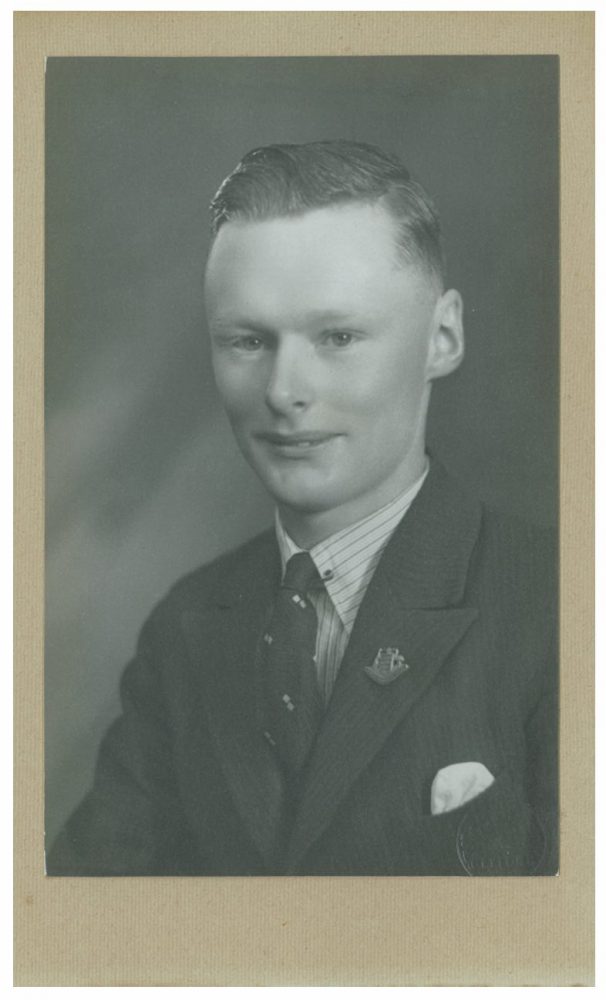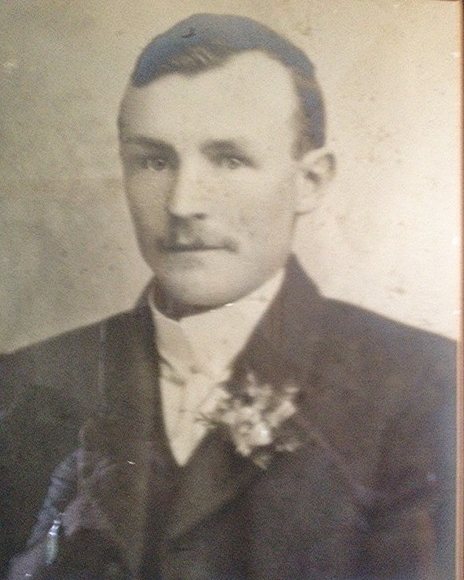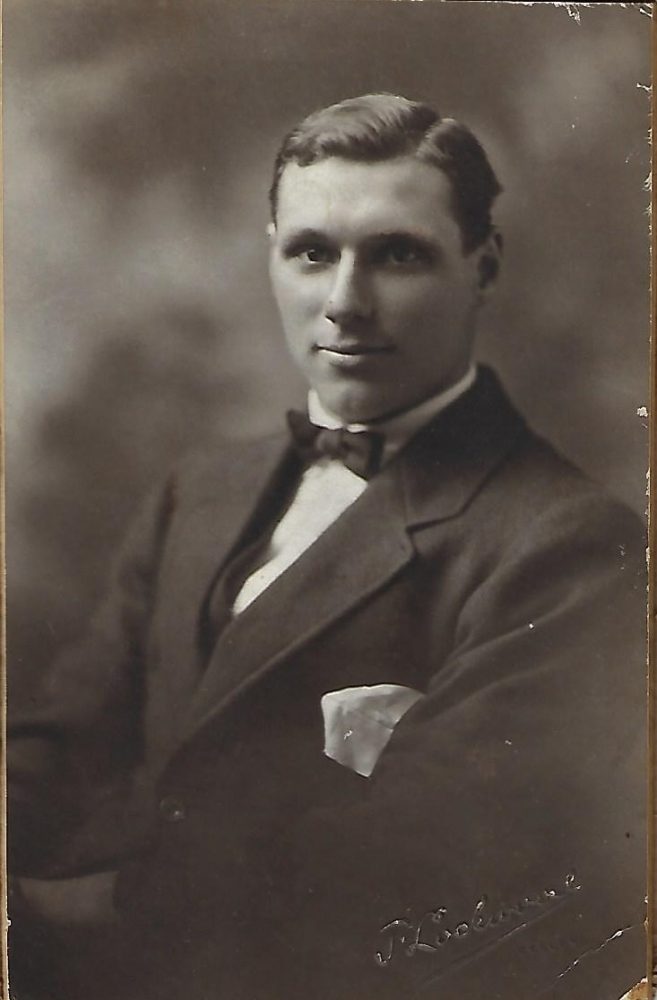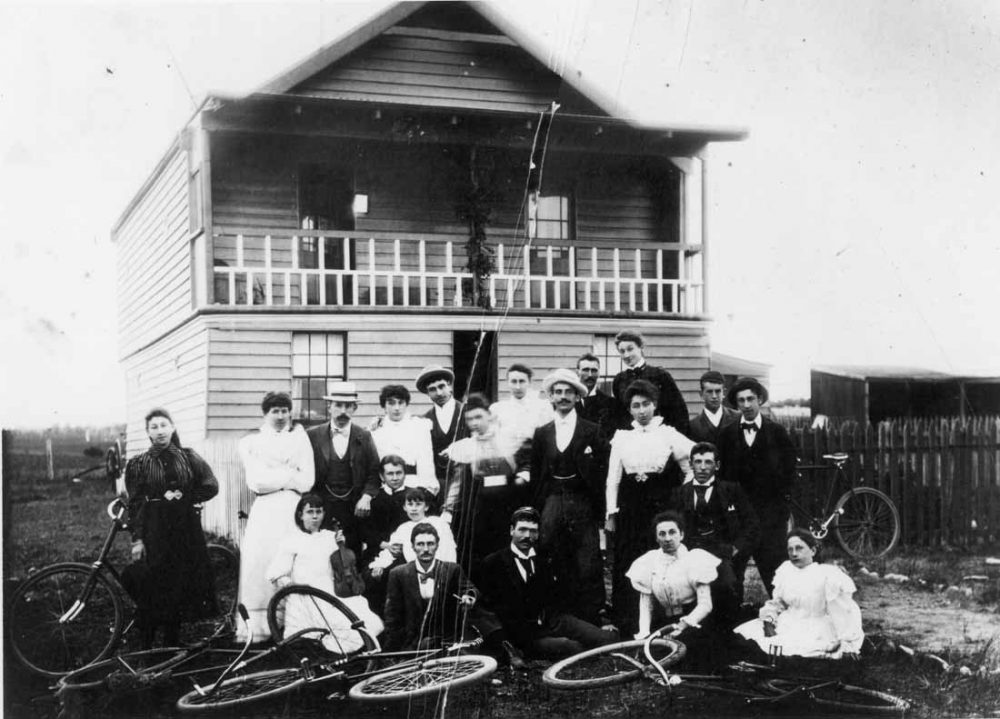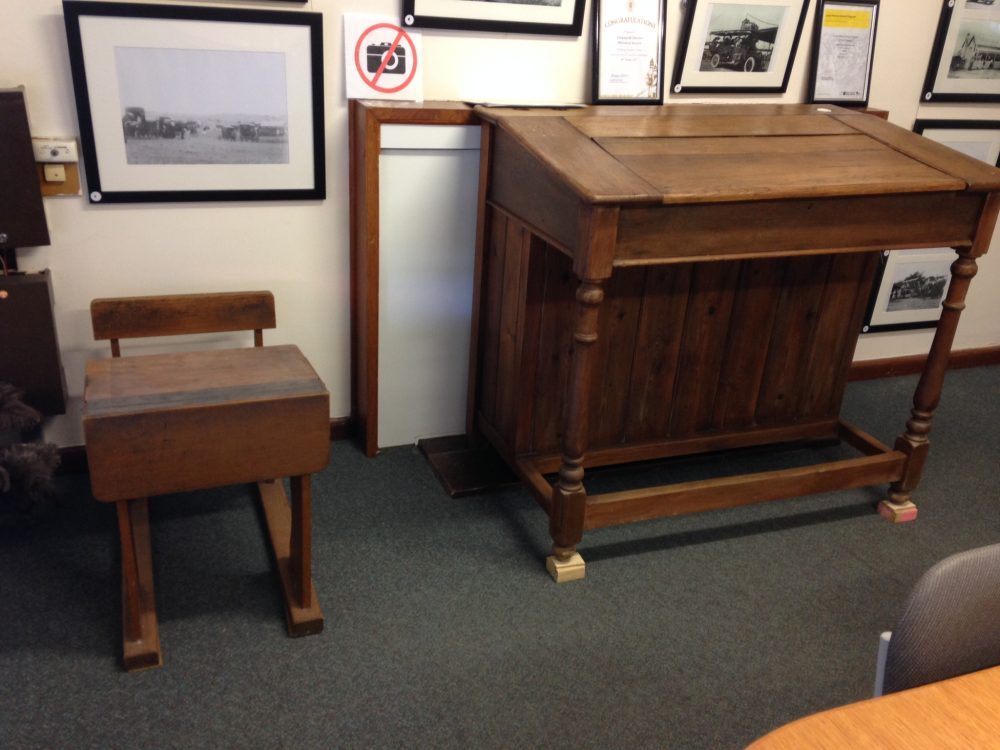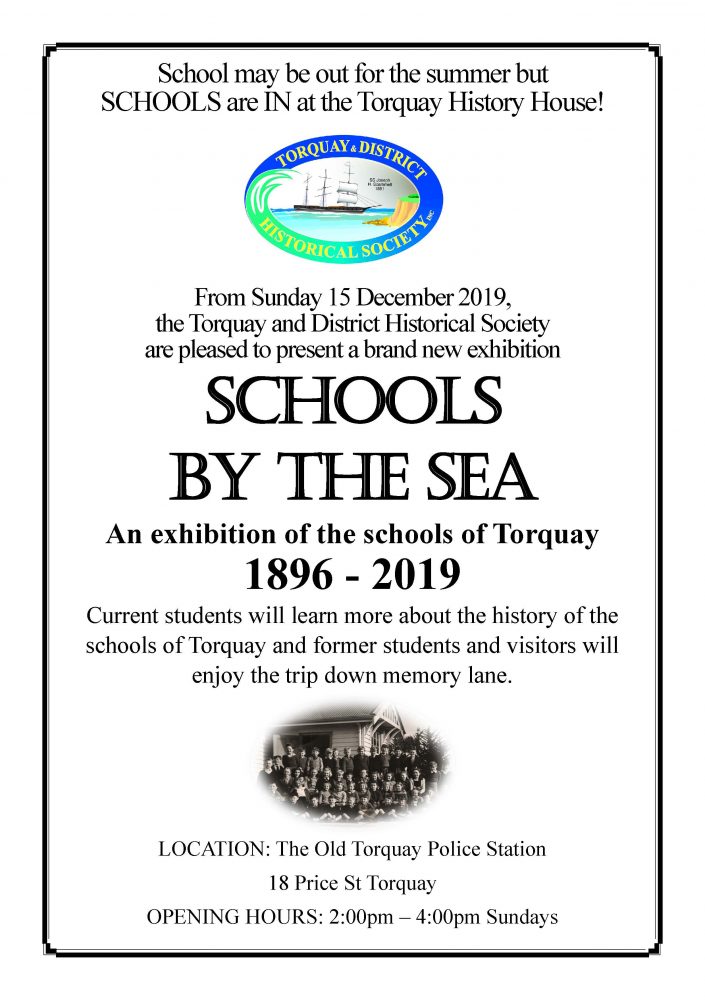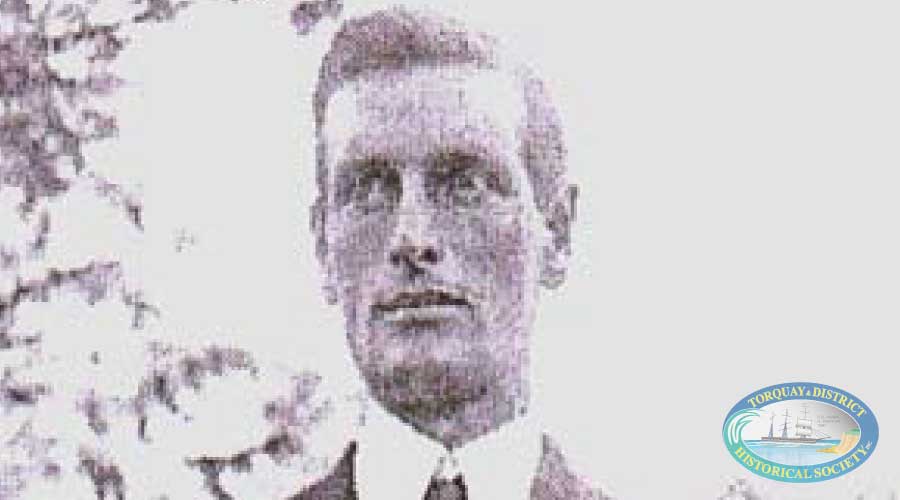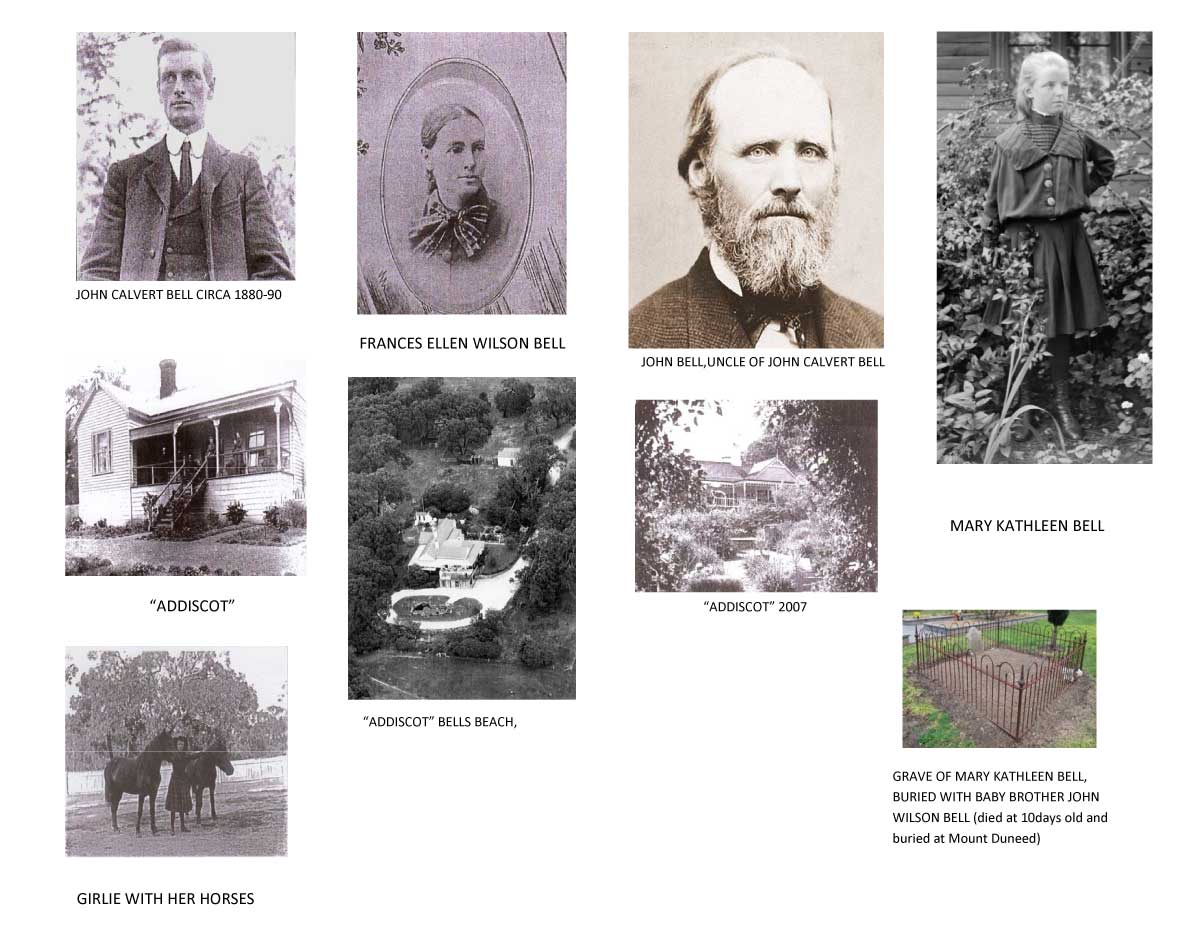JOHN CALVERT BELL, was born in 1861 at Leigh in Victoria, His father James Bell was born on 21st August 1829 in Dornock, Dumfries Shire in Scotland, and his Mother Mary Singer Bell was born in 1837 at an Indian Military hill station, Midnapore near Calcutta. Her father was Alexander Stewart Singer who had served with the East India Company.
JAMES had followed his older brother John Bell to Australia who had followed the lure of gold. John Bell had done very well and had settled in New South Wales. Mary, after the death of her parents had come to Australia to join her brother who had arrived earlier with John Mc Arthur. Mary and James met on the journey here and were married at Christ Church, South Yarra soon after their arrival. They had three children, John Calvert Bell, Alexander Singer Bell (born 1863) and Clara Johnstone Bell (born 1866). James Bell died in 1887 and is buried in the family plot at the East Geelong Cemetery. His wife Mary lived on for another 46 years and spent her final years in Malvern.
JOHN CALVERT BELL spent his childhood at Teesdale and his wife Frances Ellen Wilson also grew up around Teesdale. Their fathers were prominent members of the community and came from strong pioneering first generation Australian families, both were well educated. John Calvert Bell was brought up at “ The Leigh” in Inverleigh and spent time on other family properties in Victoria and New South Wales. He was educated at Geelong College. Frances (known as Fanny,) was the daughter of Charles Anthony Corbett Wilson and Maria Powell and was born on 26th September 1863.
DURING THEIR EARLY MARRIED life John and Frances moved several times.
Their first child CLARA IRENE STEWART BELL was born in Geelong on 7th September, 1886, NAOMIE FRANCES WOOLBROOK BELL was born at Woolbrook, Inverleigh in 1887. In 1889 the family resided at “Retreat” Bambra, near Deans Marsh, where HONOUR CALVERT BELL was born on 24th December 1889.
In 1891 J.C. Bell purchased Calder Park Estate, which his brother Alexander had been leasing. His first son HAROLD GEORGE BELL was born there in 1891. MARY KATHLEEN (“ GILRLIE) BELL was born at Calder Park in 1893, and another son JOHN WILSON BELL was born at Calder Park in 1896 but was to die after 10 days and is buried at Mount Duneed. The older girls were sent as boarders to Loreto Abbey, Ballarat, a Catholic convent school and Girlie followed later. Sonny (Harold) attended Knowle House, Central College, Geelong.
By 1900, Frances was suffering ill health and died on 17th September 1901, leaving J.C. Bell a widower with five children, the eldest just fourteen years old, and Mary Kathleen (“Girlie”) the youngest at 7. At this time J.C. Bell moved his family to “Addiscot” near Jan Juc (now Bellbrae) The property came with 700 acres of the coastal reserve. John Calvert Bell renovated extensively and worked to improve the land, felling the ironbark trees and fencing large areas.
In 1908 John Calvert Bell married Irene Agatha Wilson, the sister of his late wife. Irene had been living at “Addiscot” helping him care for the children after the death of Frances. CLARA Irene Stewart Bell, heavily influenced by the nuns of Loreto and Mother Gonzaga Barry, and soon after leaving school entered the convent and became a Loretto sister. NAOMI travelled widely with her cousins, ultimately marrying a sea Captain Edward Charles O’Byrne and settled in Dublin.
Naomi died while he was away on one of his voyages and was buried in
Dublin in December 1920.
HONOUR Calvert Otway Bell , after boarding school, like her sister entered the convent in 1918. Honour died in hospital in Ballarat in December 1967. HAROLD GEORGE BELL followed in his Father’s footsteps onto the land visiting large pastoral holdings in Western Victoria, Queensland and New South Wales. He was the manager of Morronga Station in the Riverina area when he enlisted in the Australian Infantry forces at the outbreak of War in 1914. He left Australia with the 11th Field Artillery and was killed near Ypres in Belgium in the Battle of Menin Gate in October 1917.
Girlie (Mary Kathleen) remained at Addiscot and cared for her father who died in 1937. Girlie lived the remainder of her life in a small shack at Addiscot and later in a cottage at Bellbrae. She lived mostly as a recluse, but was well known in the area. She died in 1978.







